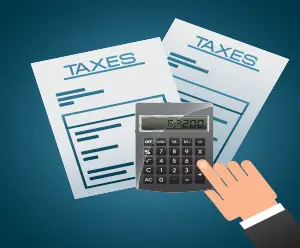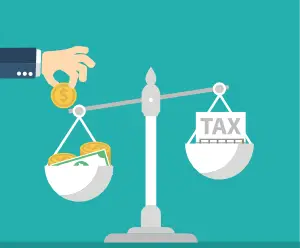
Understanding the IRS Substitute for Return
Click to ask Mike Ask Mike The Internal Revenue Service (IRS) Substitute for Return (SFR) is a term many taxpayers

The Internal Revenue Service (IRS) recognizes the challenges associated with tax debt and offers various installment agreements as a lifeline for those seeking a structured approach to settling their dues. In this detailed exploration, we will delve into the nuances of IRS installment agreements, shedding light on the different types available, eligibility criteria, the application process, and crucial considerations for anyone considering this financial arrangement.
1. Amount Owed
The first crucial factor in determining eligibility for an installment agreement is the amount owed. The IRS categorizes payment plans based on the outstanding tax debt, providing different solutions for varying financial circumstances:
2. Monthly Income
For individuals facing a total tax debt exceeding $50,000, the IRS requires a detailed overview of your monthly income. The amount you earn each month significantly influences the type of payment plan for which you may qualify.
3. Age of Tax Debt
The IRS operates within a Collection Statute Expiration Date (CSED) framework, initiating the 10-year countdown from the date of filing a tax return. The age of your tax debt can influence the duration of your installment agreement.
1. Short-Term Installment Agreement
This type of agreement is designed for individuals who anticipate paying off their tax debt within a relatively short period, typically within six months. To qualify for a short-term installment agreement, the total amount owed, including taxes, penalties, and interest, must be less than $100,000. While there are no setup fees associated with this agreement, it’s important to note that interest and penalties continue to accrue until the debt is fully paid.
2. Long-Term Installment Agreement
For those requiring more than six months to settle their tax debt, the long-term installment agreement is a viable option. To be eligible, the total amount owed must be less than $50,000. Various payment arrangements are available, depending on the specific installment agreement type chosen.
3. In-Business Trust Fund Express Installment Agreements
Designed for small business owners with employees, this installment agreement is applicable if you owe $25,000 or less. It allows for a repayment period of two years or less. Notably, applicants are required to submit detailed financial information using Form 433-F.
4. Routine Installment Agreement
For tax debts that don’t fit into the criteria of other installment agreements, the routine installment agreement provides a solution. It allows for a repayment period of two years or less.
5. Alternative Installment Agreement
This arrangement follows two distinct rules: the 6-year rule and the 1-year rule.
These alternative rules provide flexibility for individuals facing unique financial challenges.
Applying for an Installment Agreement
The application process for an IRS installment agreement can be initiated through various channels, including online applications, phone inquiries, or the submission of Form 9465. The specific type of agreement you’re applying for will determine the required financial information.
Approval Timeframe
Once the application is submitted, the IRS typically takes between one to two months to review and approve a payment plan. During this period, it’s crucial to ensure that all necessary documentation is accurate and up-to-date.
Interest and Penalties
One of the critical considerations when entering into an installment agreement is the accrual of interest on unpaid balances. This interest is charged from the initial due date and continues until the entire debt is paid off. Additionally, taxpayers may incur additional penalties for failure to file or pay taxes on time.
Monthly Payment Calculation
When proposing an installment agreement, it’s recommended to offer a monthly payment that is at least equal to your income minus living expenses. The IRS may expect a minimum payment based on the chosen payment term and the total amount owed.
Eligibility Evaluation for Larger Debts
For tax debts exceeding $50,000, the IRS may conduct a thorough evaluation of your eligibility based on the Collection Financial Standard. This standard assesses necessary living expenses, potentially influencing the terms of the installment agreement.
Exploring Alternative Agreements
In situations where traditional installment agreements might not be suitable, the 6-year and 1-year rules of the alternative installment agreement can be explored. The 6-year rule involves committing to paying off the balance within six years, providing a more extended timeframe for debt resolution. The 1-year rule necessitates modifying or eliminating certain expenses within one year, offering a shorter-term solution for specific financial challenges.
Causes of Default
While the IRS provides flexibility, certain conditions may lead to default on an installment agreement:
Consequences of Default
In the event of default, the IRS typically provides a 30-day grace period for reinstatement. However, if the taxpayer fails to reinstate the agreement within this timeframe, the IRS may resort to termination of the agreement, potentially leading to liens, wage garnishment, or other collection actions.
Credit Score Impact
An important consideration for many is the impact of installment agreements on credit scores. Fortunately, entering into an IRS installment agreement does not have a direct impact on credit scores. This provides some relief for individuals concerned about the potential long-term consequences on their creditworthiness.
Making Changes to Agreements
Flexibility is crucial, and the IRS recognizes that individuals’ financial situations may change. Making changes to existing installment agreements can be done by contacting the IRS via phone or using the Online Payment Agreement tool. Additionally, changes to personal information, such as address updates, can be addressed by submitting Form 8822.
Checking Balance and Payment History
In the digital age, the IRS provides tools for taxpayers to monitor their installment agreements conveniently. Through the online account, individuals can access real-time information about their current balance and payment history, ensuring transparency throughout the repayment process.
Pros
Cons
In conclusion, mastering the intricacies of IRS installment agreements is paramount for those navigating the complexities of tax debt. This comprehensive guide has provided an in-depth exploration of the various types of agreements available, eligibility criteria, the application process, and key considerations for individuals and businesses alike.
It’s important to note that tax laws and regulations can undergo changes. Therefore, individuals seeking the most accurate and up-to-date information tailored to their specific circumstances are encouraged to consult the official IRS website or seek professional advice. Managing tax debt is a collaborative effort between taxpayers and tax authorities, and understanding the available options is the first step towards financial stability and peace of mind.
You can now ask our AI assistant any questions you have about your tax debt or any tax-related issues. Whether you’re unsure about payment plans, need clarification on penalties, or want information on how to resolve your tax situation. Our AI is ready to assist you with all your tax-related concerns.

By interacting with our AI assistance, you agree to our terms & conditions. Enjoy our AI Tax Assistant responsibly.
Ask me any questions...
Related Posts

Click to ask Mike Ask Mike The Internal Revenue Service (IRS) Substitute for Return (SFR) is a term many taxpayers

Click to ask Mike Ask Mike The Internal Revenue Service (IRS) Substitute for Return (SFR) is a term many taxpayers

Click to ask Mike Ask Mike The Internal Revenue Service typically operates within a 10-year window, commencing from the

Click to ask Mike Ask Mike The Internal Revenue Service (IRS) operates within specific timeframes dictated by statutes of limitations

Click to ask Mike Ask Mike understanding the ins and outs of the 10-year statute of limitations (SOL) is essential.
Recent Posts

Click to ask Mike Ask Mike The Internal Revenue Service (IRS) Substitute for Return (SFR) is a term many taxpayers

Click to ask Mike Ask Mike The Internal Revenue Service (IRS) Substitute for Return (SFR) is a term many taxpayers

Click to ask Mike Ask Mike The Internal Revenue Service typically operates within a 10-year window, commencing from the

Click to ask Mike Ask Mike The Internal Revenue Service (IRS) operates within specific timeframes dictated by statutes of limitations

Click to ask Mike Ask Mike understanding the ins and outs of the 10-year statute of limitations (SOL) is essential.
Disclaimer: This is educational content, not legal, accounting, or tax advice.
This is a tax debt resource website, not to be used in lieu of a tax attorney or for legal advice. All information, Ai chat responses, articles, materials, and content are intended to inform users on a variety of tax topics. In no way is it intended to be construed as accounting, legal, tax, other services or advice. This site is not intended to be used to avoid tax penalties or tax debt that may be imposed by law. Terms and Conditions. Your use of this site constitutes acceptance of the following terms and conditions.
This is a tax debt resource website, not to be used in lieu of a tax attorney or for legal advice. All information, Ai chat responses, articles, materials, and content are intended to inform users on a variety of tax topics. In no way is it intended to be construed as accounting, legal, tax, other services or advice. This site is not intended to be used to avoid tax penalties or tax debt that may be imposed by law. Terms and Conditions. Your use of this site constitutes acceptance of the following terms and conditions.
© 2023 · Tax Debt Monster, Inc. All rights reserved

For all Tax Professionals that would like to partner up with us. By partnering with us, you’ll help us connect and make a positive impact in the tax community. Partner up with us and receive a complimentary Ai Tax Sidekick to help support your clients at no cost! Click here if you’re interested in our Partner-Up program

By interacting with our AI assistance, you agree to our terms & conditions. Enjoy our AI Tax Assistant responsibly.
How may I help you with your tax issue?